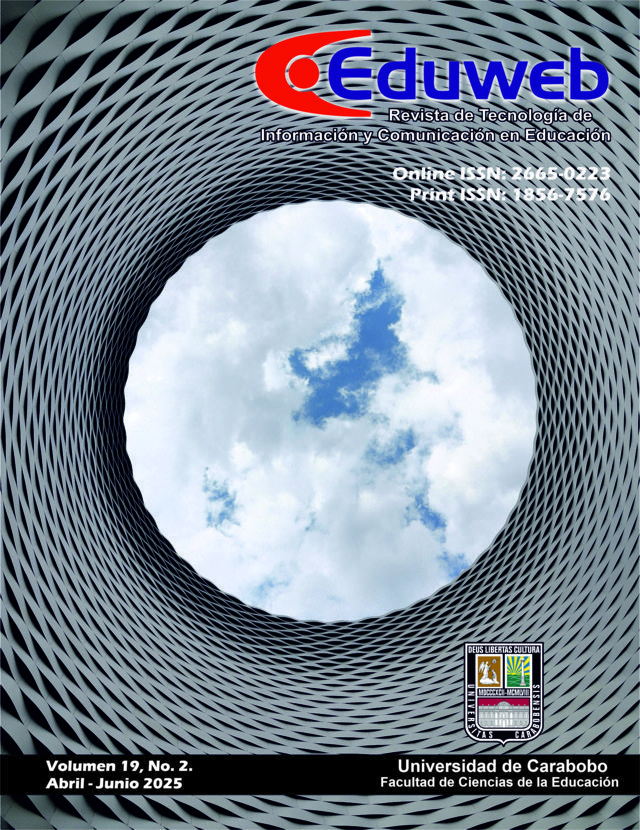Motivational aspects of bullying of children with special needs in the educational process
DOI:
https://doi.org/10.46502/issn.1856-7576/2025.19.02.20Keywords:
bullying motivation, special education, inclusive education, children with special educational needs, family and school preventionAbstract
This study examines the key motivational factors that lead to bullying against children with special educational needs in both inclusive and special educational environments. The present study empirically examines the motivational aspects of bullying. The research employed a structured survey involving 40 participants with relevant experience in inclusive education: teachers, psychologists, school administrators, and parents of children with special educational needs. The thematic analysis method was used to analysis the data. The analysis revealed that aggressive behaviour in school settings is often shaped by external social influences, particularly peer dynamics and exposure to digital media. Additional contributing factors include psychological maladjustment among perpetrators and inadequate responses from adults in educational contexts. Victimization is frequently associated with the limited self-defence capacity and social integration challenges faced by students with special needs. The study found no significant difference in the prevalence of bullying across educational models, suggesting that school culture and institutional support are more influential than the type of classroom setting. Effective prevention requires systematic communication among stakeholders and the early identification of bullying behaviours by trained professionals. The findings underscore the necessity of addressing the underlying motivations behind bullying in order to design sustainable intervention strategies. Hence, the are important for improving school policies and teacher training programs, as they contribute to the formation of a safer and more inclusive educational environment for children with special educational needs.
References
Abregú-Crespo, R., Garriz-Luis, A., Ayora, M., Martín-Martínez, N., Cavone, V., Carrasco, M. Á., Fraguas, D., Martín-Babarro, J., Arango, C., & Díaz-Caneja, C. M. (2024). School bullying in children and adolescents with neurodevelopmental and psychiatric conditions: a systematic review and meta-analysis. The Lancet. Child & Adolescent Health, 8(2), 122–134. https://doi.org/10.1016/S2352-4642(23)00289-4
Afuzova, H., Ogorodniychuk, Z., Usyk, D., Omelchenko, I., Kobylchenko, V., & Fedorenko, M. (2022). Corrective support in the context of psychological assistance to children with psychophysical disorders. Brain: Broad Research in Artificial Intelligence and Neuroscience, 13(1), 246–258. https://doi.org/10.18662/brain/13.1/282
Arifni, R., & Firman, F. (2023). Hubungan persepsi sosial siswa berkebutuhan khusus dengan bullying di sekolah inklusi. Counseling and Humanities Review, 3(1), 8–13. https://doi.org/10.24036/000655chr2023
Babych, V., Dubovoi, O., Zaitsev, V., Rydzel, Y., Saienko, V., Dubovoi, V., & Babych, L. (2022). Improvement of teaching methods of theoretical component of physical education (wıth the applicatıon of author teaching techniques) in the context of improving the level of social health of students of the special medical group, Journal for Educators, Teachers and Trainers, 13(5), 1-9 https://doi.org/10.47750/jett.2022.13.05.001
Berchiatti, M., Ferrer, A., Galiana, L., Badenes-Ribera, L., & Longobardi, C. (2022). Bullying in students with Special Education Needs and Learning Difficulties: The role of the student–teacher relationship quality and students’ social status in the peer group. Child & Youth Care Forum, 51(3), 515–537. https://doi.org/10.1007/s10566-021-09640-2
Berchiatti, M., Badenes-Ribera, L., Galiana, L., Ferrer, A., & Longobardi, C. (2020). Bullying in Students Who Stutter: The Role of the Quality of the Student–Teacher Relationship and Student’s Social Status in the Peer Group. Journal of School Violence, 20(1), 17–30. https://doi.org/10.1080/15388220.2020.1812077
Bilavych, H. V., Didukh, I. J., Stynska, V. V., Prokopiv, L. M., Fedchyshyn, N. O., Savchuk, B. P., & Fedoniuk, L. Y. (2022). Development of inclusive education in ukraine in the context of world trends. Medical News, 75(4), 891–899. https://doi.org/10.36740/wlek202204125
Boychuk, Y., Naumenko, N., Kazachiner, O., & Halii, A. (2023). Content of Preschool Teacher’s Training for Working with Children with Special Educational Needs in Conditions of War and Global Challenges. Stage fright, (60). https://doi.org/10.4000/trema.8638
Byrko, N., Tolchieva, H., Babiak, O., Zamsha, A., Fedorenko, O., & Adamiuk, N. (2022). Training of Teachers for the Implementation of Universal Design in Educational Activities. AD ALTA. Journal of Interdisciplinary Research, 12(02-XXVIII), 117–125. https://www.magnanimitas.cz/ADALTA/120228/papers/A_22.pdf
Cabrera, M. C., Larrañaga, E., & Yubero, S. (2022). Bullying/cyberbullying in secondary education: A comparison between secondary schools in rural and urban contexts. Child & Adolescent Social Work Journal: C & A, 41(4), 617–631. https://doi.org/10.1007/s10560-022-00882-0
Chabursky, S., Gutt, J., & Guglhör-Rudan, A. (2024). Ukrainian refugee adolescents in Germany – A qualitative study on schooling experiences and the fulfillment of basic psychological needs. Children and Youth Services Review, 107582. https://doi.org/10.1016/j.childyouth.2024.107582
Charania, S. N., Danielson, M. L., Claussen, A. H., Lebrun-Harris, L. A., Kaminski, J. W., & Bitsko, R. H. (2022). Bullying victimization and perpetration among US children with and without tourette syndrome. Journal of Developmental and Behavioral Pediatrics, 43(1), 23–31. https://doi.org/10.1097/DBP.0000000000000975
Dovhopola, K. S., Nabochenko, O. O., & Kostenko, T. M. (2024). Teachers’ assessment of the mental health of children with special educational needs during the war. Medical News, 77(6), 1217–1223. https://doi.org/10.36740/wlek202406116
Drăghici, A. (2024). The Consequences of bullying on the Child and on the Rights of Personality. Athens Journal of Law, 10(4), 545–566. https://doi.org/10.30958/ajl.10-4-7
Falla, D., Sánchez, S., & Casas, J. A. (2021). What Do We Know about Bullying in Schoolchildren with Disabilities? A Systematic Review of Recent Work. Sustainability, 13(1), 416. https://doi.org/10.3390/su13010416
Filipenko, L., Kurchatova, A., Parshuk, S., Yakimenko, P., Trofaila, N., & Bilan, L. (2022). Psychological and Pedagogical Determinants of Personality Bullying in the Sociometric Dimension. Romanian Journal for Multidimensional Education, 14(1), 263–282. https://doi.org/10.18662/rrem/14.1/518
Fissel, E. R., & Bryson, S. L. (2024). To intervene or not intervene: the role of moral disengagement, self-control, and empathy in bullying bystander intervention. Journal of Crime and Justice, 47(2), 201–218. https://doi.org/10.1080/0735648x.2023.2241444
Forber-Pratt, A. J., Hanebutt, R., Minotti, B., Cobb, N. A., & Peagram, K. (2022). Social-emotional learning and motivational interviews with middle school youth with disabilities or at-risk for disability identification. Education and Urban Society, 56(1), 33–65. https://doi.org/10.1177/00131245221110557
Gimenez, G., Mediavilla, M., Giuliodori, D., & Rusteholz, G. C. (2024). Bullying at School and Students’ Learning Outcomes: International Perspective and Gender Analysis. Journal of Interpersonal Violence, 39(11-12), 2733-2760. https://doi.org/10.1177/08862605231222457
Hartley, M. T., Bauman, S., Nixon, C. L., & Davis, S. (2015). Comparative Study of Bullying Victimization Among Students in General and Special Education. Exceptional Children, 81(2), 176–193. https://doi.org/10.1177/0014402914551741
Horton, P., Forsberg, C., & Thornberg, R. (2025). Inclusive education and the bullying involvement of boys with special educational needs at a Swedish elementary school. International Journal of Inclusive Education, 1–14. https://doi.org/10.1080/13603116.2025.2487471
Kapitanoff, S., & Pandey, C. (2024). The Content of Verbal Bullying and Emotional Reactions Among Middle-School Students. Child & Youth Care Forum. (Vol. 53, No. 6, pp. 1311-1332). New York: Springer US. https://doi.org/10.1007/s10566-024-09796-7
Kocaj, A., Kuhl, P., Jansen, M., Pant, H. A., & Stanat, P. (2018). Educational placement and achievement motivation of students with special educational needs. Contemporary Educational Psychology, 55, 63–83. https://doi.org/10.1016/j.cedpsych.2018.09.004
Kondratyuk, Z., Omelchenko, I., Konopliasta, S., Matiushchenko, I., Synytsia, A., & Mykhailenko, V. (2025). Adaptive Capacity of Preschoolers with Special Educational Needs in Inclusive Resource Centres. BRAIN. Broad Research in Artificial Intelligence and Neuroscience, 16(1 Sup1), 41. https://doi.org/10.70594/brain/16.s1/4
Liu, L., Huang, Y., Liu, X., & Zhang, L. (2024). Why do teachers intervene? understanding the relationship between subjective norms and teachers’ intervention in real-life bullying incidents. Social Psychology of Education, 28(1), 1-21. https://doi.org/10.1007/s11218-024-09965-5
Malisiova, A., & Folia, V. (2024). Practical Interventions to Address Bullying and Support Students With Special Educational Needs. In Advances in Educational Marketing, Administration, and Leadership (pp. 249–278). IGI Global. https://doi.org/10.4018/979-8-3693-5315-8.ch009
Mayhew, M. J., Lo, M. A., Dahl, L. S., Selznick, B. S., & Arminio, J. (2018). Assessing Students' Intention to Intervene in a Bystander Situation. Journal of College Student Development, 59(6), 762–768. https://doi.org/10.1353/csd.2018.0072
Menéndez Santurio, J. I., Fernández-Río, J., Cecchini Estrada, J. A., & González-Víllora, S. (2020). Connections between bullying victimization and satisfaction/frustration of adolescents' basic psychological needs. Revista de Psicodidáctica (English ed.), 25(2), 119–126. https://doi.org/10.1016/j.psicoe.2019.11.002
Milevska, О., Savitska, H., Omelchenko, I., Kobylchenko, V., & Kharkavtsiv, I. (2022). Тhe practical aspects of implementing special and inclusive education in schools. AD ALTA: Journal of Interdisciplinary Research, 12(28), 13-16. http://www.magnanimitas.cz/ADALTA/120228/papers/A_02.pdf
Moroz, O., Bondar, V., & Khatniuk, Y. (2023). Protection of children’s rights as a component of Ukraine’s national security. Social Legal Studios, 6(3), 104–110. https://doi.org/10.32518/sals3.2023.104
Murillo-Moraño, J., Calmaestra, J., Morente, Á., & Benítez-Sillero, J. D. (2024). Influence of School Bullying on Motivation in Physical Education Classes. Journal of School Violence, 1–17. https://doi.org/10.1080/15388220.2024.2393144
Oliinyk, T., Mishchenko, O., Iievliev, O., Saveliev, D., & Hubina, S. (2023). Inclusive education in Ukraine: conditions of implementation and challenges. Cadernos de Educação, Tecnologia e Sociedade, 16(se2), 50–62. https://doi.org/10.14571/brajets.v16.nse2.50-62
Petrenko, I. (2021). Modern approaches to creating a safe space for children: educational security projects in Ukraine. Scientific Papers of the Witelon State University of Applied Sciences in Legnica, 4(41), 73–81. DOI: 10.5604/01.3001.0015.7773
Popel, S., Mazin, V., Maksymchuk, B., Saienko, V., Chernyshenko, T., & Maksymchuk, I. (2023). Network Planning at the Faculties of Physical Education and Sport in the Postmodern Era. BRAIN. Broad Research in Artificial Intelligence and Neuroscience, 14(1), 554–570. https://doi.org/10.18662/brain/14.1/435
Pranintasari, R., & Wachidah, K. (2021). Bullying Analysis of Children with Special Needs in Elementary School. Indonesian Journal of Education Methods Development, 13. https://doi.org/10.21070/ijemd.v13i.596
Rochma, A. F. (2024). Strategies to minimize bullying and enhance motivation in english language learning: A literature review. Edulink: Education and Linguistics Knowledge Journal, 6(2), 152. https://doi.org/10.32503/edulink.v6i2.3755
Sarancha, I., Maksymchuk, B., Kharchenko, S., Linnik, Y., Dovbnia, S., Pavelkiv, V., Maksymchuk, I., Shakhina, I., Saienko, V., Bashtovenko, O., Silaiev, V., Radovenchyk, A., & Zhytomyrskyi, L. (2022). The influence of parents’ mutual support on the socialization of children with Special Needs in rehabilitation centres: Neuropsychological aspects. Brain: Broad Research in Artificial Intelligence and Neuroscience, 13(4), 362–382. https://doi.org/10.18662/brain/13.4/393
Schütz, J., Schipper, N., & Koglin, U. (2022). Bullying in school and cyberbullying among adolescents without and with special educational needs in emotional–social development and in learning in Germany. Psychology in the Schools. https://doi.org/10.1002/pits.22722
Thornberg, R., Tenenbaum, L., Varjas, K., Meyers, J., Jungert, T., & Vanegas, G. (2012). Bystander Motivation in Bullying Incidents: To Intervene of Not to Intervene? Western Journal of Emergency Medicine, 13(3), 247–252. https://doi.org/10.5811/westjem.2012.3.11792
Zapata-López, J. S., Tonguino-Rosero, S., & Méndez, F. (2024). Sedentary behavior and school bullying in adolescents: An analysis based on a national survey in Colombia. The Journal of School Health, 94(8), 727–735. https://doi.org/10.1111/josh.13397
Zhuravlova L., Leshchii N., Zamsha A., Babiak O., Lyndina Y., Voroshchuk O. (2021). Techniques for the correction of language disorders among children with psycho-physical development peculiarities. AD ALTA. Journal of Interdisciplinary Research, 11(2) Special Issue XXII, 133-137. https://www.magnanimitas.cz/ADALTA/110222/papers/A_24.pdf
Published
How to Cite
Issue
Section
License
Copyright (c) 2025 Anna Zamsha, Alla Dushka, Iryna Omelchenko, Vadym Kobylchenko

This work is licensed under a Creative Commons Attribution 4.0 International License.














